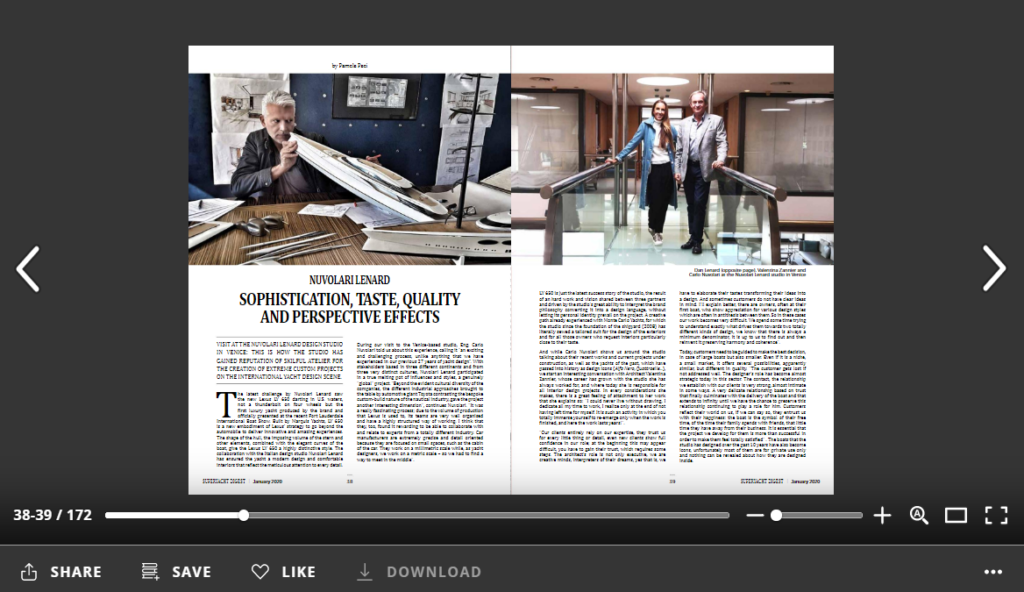T[dropcap][/dropcap]he latest challenge by Nuvolari Lenard saw the new Lexus LY 650 darting in U.S. waters, not a thunderbolt on four wheels but the first luxury yacht produced by the brand and officially presented at the recent Fort Lauderdale International Boat Show. Built by Marquis Yachts, LY 650 is a new embodiment of Lexus’ strategy to go beyond the automobile to deliver innovative and amazing experiences. The shape of the hull, the imposing volume of the stern and other elements, combined with the elegant curves of the boat, give the Lexus LY 650 a highly distinctive style. The collaboration with the Italian design studio Nuvolari Lenard has ensured the yacht a modern design and comfortable interiors that reflect the meticulous attention to every detail. During our visit to the Venice-based studio, Eng. Carlo Nuvolari told us about this experience, calling it “an exciting and challenging process, unlike anything that we have experienced in our previous 27 years of yacht design”. With stakeholders based in three different continents and from three very distinct cultures, Nuvolari Lenard participated in a true melting pot of influences and styles, a genuinely “global” project. “Beyond the evident cultural diversity of the companies, the different industrial approaches brought to the table by automotive giant Toyota contrasting the bespoke custom-build nature of the nautical industry, gave the project another interesting dimension”, continues Nuvolari. “It was a really fascinating process; due to the volume of production that Lexus is used to, its teams are very well organised and have a highly structured way of working. I think that they, too, found it rewarding to be able to collaborate with and relate to experts from a totally different industry. Car manufacturers are extremely precise and detail oriented because they are focused on small spaces, such as the cabin of the car. They work on a millimetric scale while, as yacht designers, we work on a metric scale – so we had to find a way to meet in the middle”.
[divider style=”solid” top=”20″ bottom=”20″]
From Superyacht Digest | January Issue 2020
[divider style=”solid” top=”20″ bottom=”20″]
LY 650 is just the latest success story of the studio, the result of an hard work and vision shared between three partners and driven by the studio’s great ability to interpret the brand philosophy converting it into a design language, without letting its personal identity prevail on the project. A creative path already experienced with Monte Carlo Yachts, for which the studio since the foundation of the shipyard (2008) has literally sewed a tailored suit for the design of the exteriors and for all those owners who request interiors particularly close to their taste.
And while Carlo Nuvolari shows us around the studio talking about their recent works and current projects under construction, as well as the yachts of the past, which have passed into history as design icons (Alfa Nero, Quattroelle…), we start an interesting conversation with Architect Valentina Zannier, whose career has grown with the studio she has always worked for, and where today she is responsible for all interior design projects. In every considerations she makes, there is a great feeling of attachment to her work that she explains so: “I could never live without drawing, I dedicate all my time to work, I realize only at the end of not having left time for myself. It is such an activity in which you totally immerse yourself to re-emerge only when the work is finished, and here the work lasts years!”.
“Our clients entirely rely on our expertise, they trust us for every little thing or detail, even new clients show full confidence in our role; at the beginning this may appear difficult, you have to gain their trust, which requires some steps. The architect’s role is not only executive, we are creative minds, interpreters of their dreams, yes that is, we have to elaborate their tastes transforming their ideas into a design. And sometimes customers do not have clear ideas in mind. I’ll explain better, there are owners, often at their first boat, who show appreciation for various design styles which are often in antithesis between them. So in these cases our work becomes very difficult. We spend some time trying to understand exactly what drives them towards two totally different kinds of design, we know that there is always a minimum denominator, it is up to us to find out and then reinvent it preserving harmony and coherence”.
Today, customers need to be guided to make the best decision, in case of large boats but also smaller. Even if it is a niche, a small market, it offers several possibilities, apparently similar, but different in quality. “The customer gets lost if not addressed well. The designer’s role has become almost strategic today in this sector. The contact, the relationship we establish with our clients is very strong, almost intimate in some ways. A very delicate relationship based on trust that finally culminates with the delivery of the boat and that extends to infinity until we have the chance to preserve this relationship continuing to play a role for him. Customers reflect their world on us, if we can say so, they entrust us with their happiness: the boat is the symbol of their free time, of the time their family spends with friends, that little time they have away from their business. It is essential that the project we develop for them is more than successful in order to make them feel totally satisfied” . The boats that the studio has designed over the past 10 years have also become icons, unfortunately most of them are for private use only and nothing can be revealed about how they are designed inside.
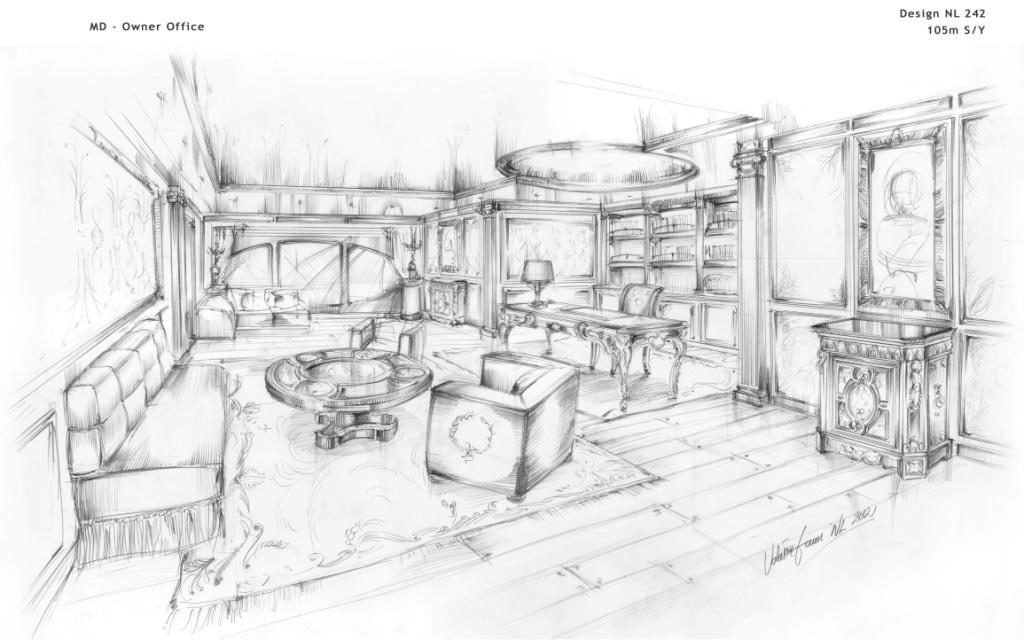
THE DESIGN CHALLENGE
With the 87m Oceanco M/Y DAR, Nuvolari Lenard design studio was lucky. The owner allowed on board visits at the Monaco Yacht Show and gave the possibility to the yard to disclose some pictures to the media. Yachts such as the beautiful Black Pearl remain shrouded in their fascinating mystery. Valentina Zannier shows us part of the preliminary handmade drawings with which she initially proposed her ideas to the owner, who had a precise style in mind for the interiors of his sailing boat: Louis XVI style reigns supreme on board, totally contrasting with the exteriors, exalting ultra contemporary lines and shapes for a fully technology-equipped yacht.
Built in 2016 as Project Solar, Black Pearl can cross the Atlantic using only 20 litres of fuel, aided by regenerative technologies. One key technology to support this, is to use the speed of the vessel through the water under sail to generate electricity with a variable pitch propeller. The yacht also features heat capture technologies and large scale storage batteries to capture energy generated but not immediately used.
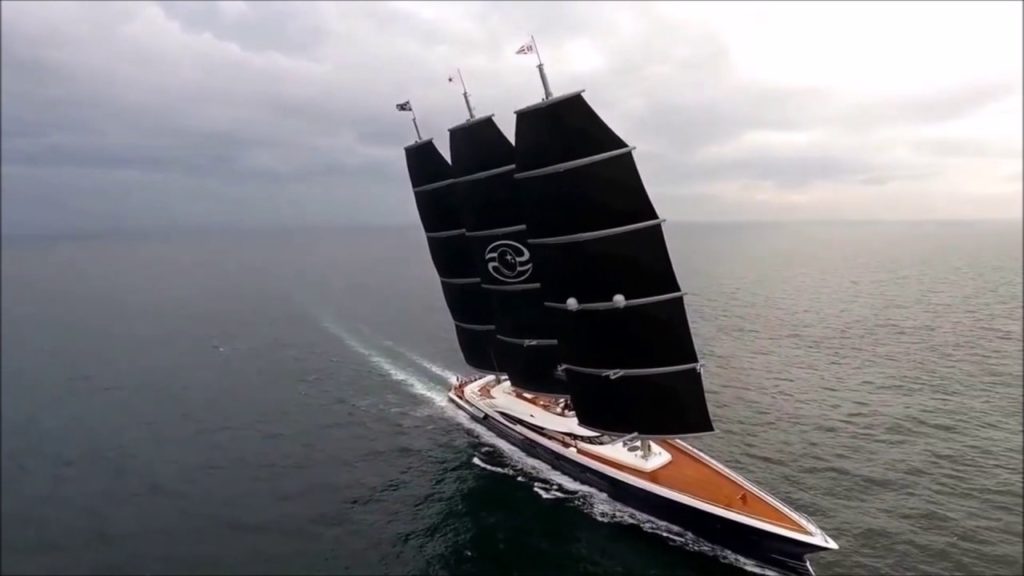
“Even though, looking at the drawings, it may seems an overly complicated work, Black Pearl is the yacht that actually has created less criticalities. The owner had in fact a clear vision and a specific request since the beginning. Louis XVI style does not imply to any personal interpretation, requires only study, application and implementation of the architectural rules. It’s all about applying a code, a very well defined style. It does not require the designer to create a new one”.
“It is truth that this type of work intales an extreme difficulty, working up to the smallest details so that the result is a faithful, identical and high-quality reproduction of that kind of furnishings. For Black Pearl I had to move to Paris for a while, to study the style, get original documents, doing research on ancient books written by amanuenses of that time. That’s how the study can extend its expertise. We have no limits”.
The ability to embark any design challenge with the highest quality from the most classic to contemporary interiors, allows the studio – also active in the exterior design – to be a reference not only in terms of quality but also in taste, both for the shipyard and the client. “We take our clients by hand and with great respect for their requests, we lead them to a final decision that can make the yacht beautiful, pleasant and harmonious. Our work must take into consideration also some cultural aspects: our clients are Russian, Ukrainian, American, Canadian, all with their own way of living the space. In the West world people have more experience with design aspects and they are quicker in their choices. The world of the Russian clientele does not have one only profile, there are those who prefer opulent style, made of gold and lavish decorations, and those who want to get closer to the European style, definitely much more moderate. I think Russia is a fascinating country where wealth has developed in the latest 20 years, it is very recent – and it is interpreted differently from generation to generation. The development of a certain taste is a cultural fact that requires time in order to settle and spread. The economic acceleration of the country does not go hand in hand with the cultural development that leads to prefer a certain type of taste over another. This does not mean they don’t have taste, quite the contrary. They are very demanding, discerning clients, they would like to have everything on board, but everything clashes and is not possible on board a yacht, where spaces are limited as well as weight and surface. You must be able to select”.
Working with the the most demanding clientele allowed the studio to develop collaborations with the best manufacturers of luxury furniture. “For the interiors of a 140m yacht, you need to involve at least five different companies, which means working with 500 people. The level of specialisation of this industry requires specific skills. The yacht and every object contained therein, are extremely complex creations: they must float and live at sea for many years without being damaged by the movement and by the environmental conditions. We work with the best subcontractors, we often make on-site inspections, sometimes we can even solve difficulties on the phone, we know how these firms work, the high level of precision they reach and the meticulous attention to details they put in every single work. This is what makes the difference, just like in high jewellery. As a studio, we grasp this difference because it is exactly with this same ability that we face our design projects. We know every aspect of the yacht because we design everything, I personally design all by hand and I know how the furniture is built. The interiors of a megayacht have an extreme, sometimes even exaggerated, level of details. But when we walk towards an object – such as a yacht – made with maniacal attention, the customer can’t help but appreciate the work, understanding its high value”.
CURRENT PROJECTS
The Italian design studio helmed by Carlo Nuvolari and Dan Lenard is currently working on five important 60m+ contructions: three yachts with CRN and two with Lürssen. The studio is responsible for both interior and exterior design on all the units, except for one of the costructions in build with CRN, for which they have only created the interiors.
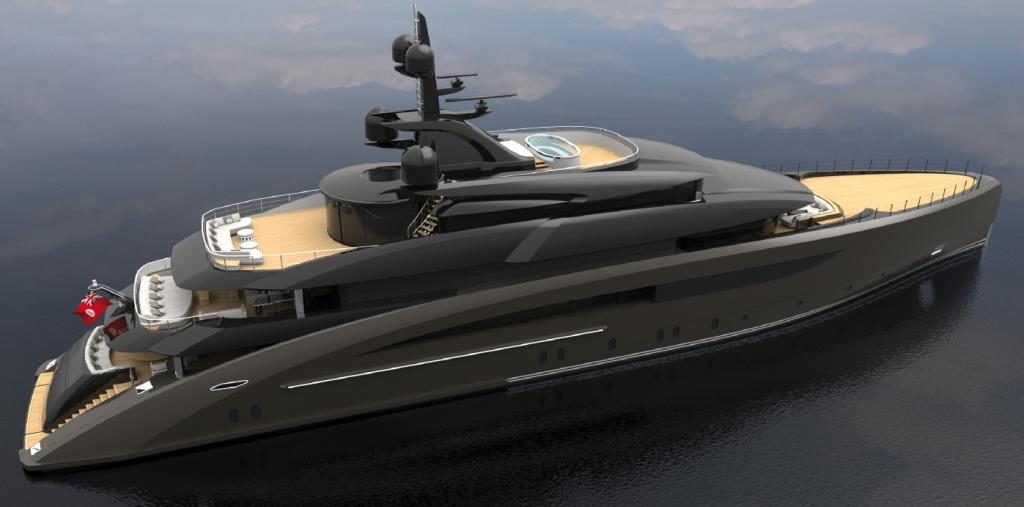
Unfortunately, the studio can’t reveal much about the three CRN interior design projects. Architect Valentina Zannier states they are completely different from one another. “We started working on the 62m CRN 137 four years ago, when the client directly asked us to conceive a new project for him. I can only say it is a yacht with a simple design, compared to the other ones. Concerning the 60m CRN 141, we are talking about a repeat client. This boat is fast and her interior design is eclectic and luxurious: it’s not cold, not classic, modern in the geometry but not in the materials. The final perception will not be of a contemporary design, but of a timeless style overall. The third CRN – hull 139, 70 meters in lenght, with the exteriors designed by Vallicelli Design, has a classic setting instead, as states Valentina. “Her client is young and he didn’t want to exaggerate with decorations. The client’s extensive yachting experience comes from charter, he has spent much time on board with his family and friends”.
As to the German yard, Nuvolari Lenard is working on two gigayachts. The first one is a 142-metre known as Project Opus, scheduled for delivery in 2020. Nuvolari Lenard is also responsible for the interior design, which will feature accommodation for 36 guests in 20 staterooms.
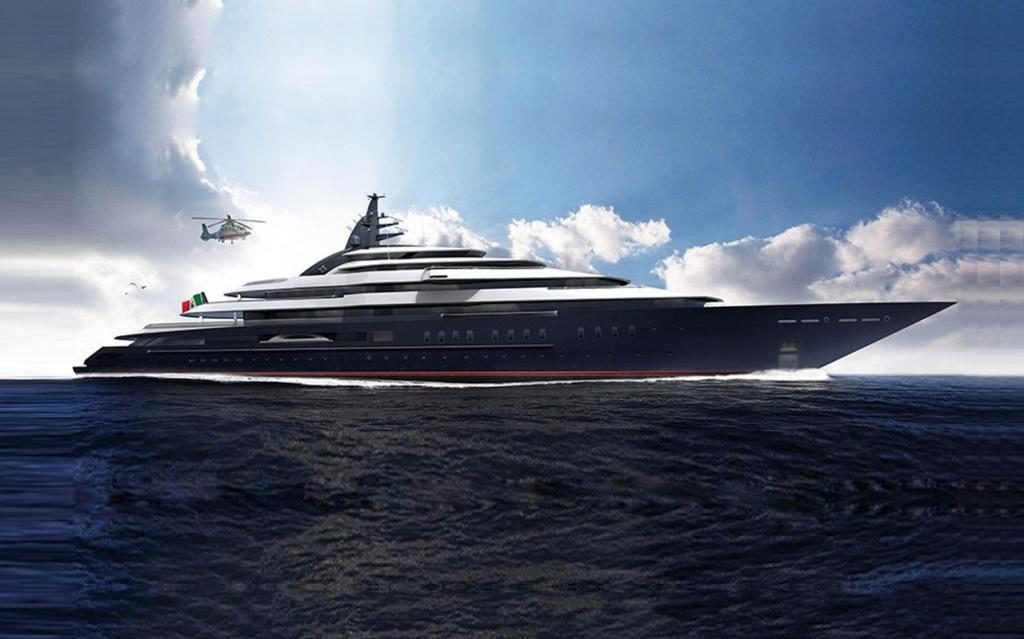
In order to have this number of guests, the yacht is being built to comply with the Passenger Yacht Code. Opus will have efficient, long-range cruising capabilities for independent global exploration.
The second Lürssen build is a 116m yacht known as Project Testarossa, which hit the water for the first time last September 2019. Also for this construction, whose delivery is slated for 2022, both interior and exterior design is created by Nuvolari Lenard in collaboration with Simone Feltrin.
Dealing with megayacht (or gigayacht in this case) is an incredible experience for a design studio, as explains Arch. Zannier. “We get the chance to work with limitless budgets and in most cases we are able to satisy any kind of desire. Who wouldn’t dream about working in such conditions? Despite the fact that every wish can be granted and that we try to fully meet our clients’ needs, time is always the key factor. We can draw sketches and conceive projects endlessy, but while we are working on paper, the construction on site continues and by the time the yacht has to hit the water, the project of the on-board equipment needs to be finished. The shipyard cannot occupy the slot and stop the construction only because the interiors have not yet been concluded. Moreover, in case the works take too long to finish, the yacht, still at metal stage, can easily rust once she has hit the water. That’s why working with a strict schedule, is key”.
A further issue related to megayachts is the instability of the sector: this market is unsteady and the whole business resolves around relatively few units and even few clients. For a design studio is essential to diversify its business, in order not to be affected by this natural instability. Working in the private aviation industry and in the real estate field, allows the studio to secure a constant workflow. In this regard, the synergetic collaboration with Monte Carlo Yachts helps balance the unpredictable trends of the megayacht market. At the same time, this joint effort enables the studio to be more eclectic. The approach to the “serial” or “semi-serial” construction is totally different from a custom project.
“With a serial product you take into consideration the brand identity, follow the market’s requests, focus on the newest trends and try to anticipate future needs”, comments Valentina. “With Monte Carlo Yachts we have created a yard from scratch, giving the brand and its products their own identity. We work for them as carefully as we do with bigger ships. We conceive tailor-made projects, as if we were real tailors. We customize different interior designs depending on the client. This doesn’t mean that we need to modify the yard’s identity: on the contrary, we emphasise it. Versatility in the world of design is essential: the designer doesn’t have to prevail, he should express the product identity (or the client’s), not his own”.
THE INCREDIBLE CASE OF BRAVO EUGENIA
Bravo Eugenia’s story seems to be a true academic case, as Carlo Nuvolari explains. Bravo Eugenia is going to make history for that. Delivered in 2018, the yacht is a 109m luxury yacht built by Oceanco and designed by Nuvolari Lenard with Lateral Naval Architects developing the naval architecture, and the interior design created by Reymond Langton Design.
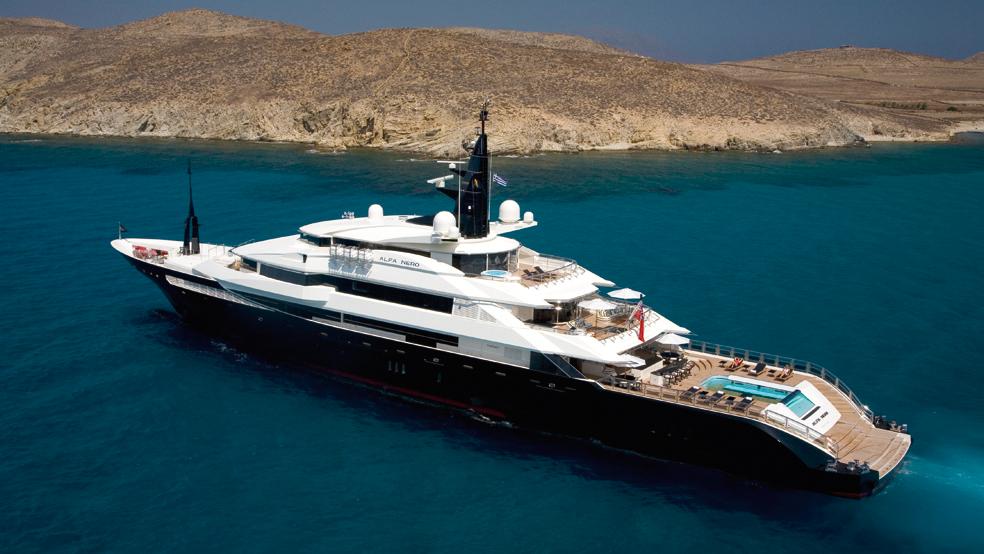
Oceanco and Nuvolari Lenard have been working together for many years now, with their collaboration resulting in a number of boats preceding the ones here mentioned (Black Pearl and DAR), such us Alfa Nero (2007), Vibrant Curiosity (2009), Seven Seas (2010), Aquijo (2015). As Carlo illustrates, “Alfa Nero marked a watershed in boat architecture and started the trend of using outdoor spaces in a different way”.
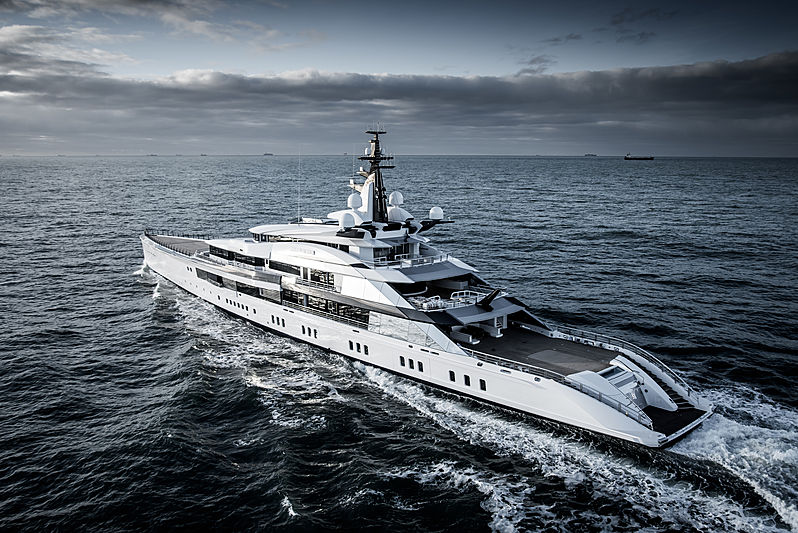
“We are aware of having inspired the market. Usually when you have an idea that works, people will go ahead and copy it, but that is okay, it means it was a good idea! This is what happened with the first swimming pool located at stern, it suddenly became the new trend in yacht design. Swimming pools on board were not unusual before Alfa Nero, but they were positioned on the upper decks, not on the lower deck”.
“Our idea was to introduce on the market a new way of experiencing the sea: being close to it while staying on your own boat. If the swimming pool is located at upper deck, you lose contact with the sea, you don’t see it, you are far from it”.
“By placing the swimming pool at sea level, like we did on Alfa Nero, guests can bathe in the sea or in the swimming pool, remaining close to the sea”.
“Market-wise, this layout has represented a great advantage for Oceanco. Alfa Nero was an incredible success. Not so much for the swimming pool position, but for the revolutionary design created around this solution in order to place the pool at lower deck aft”.
Why making a digression on Alfa Nero to get to Bravo Eugenia? Why is Bravo Eugenia “a case”?
“Because the Dutch shipyard has invited us to create a new design that could replicate the same success that Alfa Nero had gained. They asked us to come up with another ground-breaking idea, another ‘state-of-the-art’ boat”, explains Carlo Nuvolari. Bravo Eugenia and Alfa Nero are nothing like each other. Alfa Nero is smaller, only 82 meters compared to Bravo’s 109. Moreover, the first one has a larger bow, the second is more centred with a larger stern. Also, Bravo’s engine room develops on one floor, which allows a more efficient distribution of spaces and a more spacious area at upper decks”.
What similarities do they share?
“The two boats couldn’t look any less alike, they are very different from each other, but they do share the same ability of attracting and seducing. The secret lies in proportions, and in how they are perceived by people’s eyes, even before colours and shapes. Although they have a dissimilar design, opposed even, since one features a larger bow and the other a larger stern, there is one precise angle where the two are, or, better said, seem to be, identical. It is only an impression though, and you get the sense of that, only if you observe them from a certain angle”.
“Since Alfa Nero’s stern design had been so well received by the market, we thought we could apply the same formula and play with proportions. By implementing this ‘architectural trick’ we were able to elicit positive feedback, just like we did with Alfa Nero, since the proportions are the same and convey the same perception of the volume”.
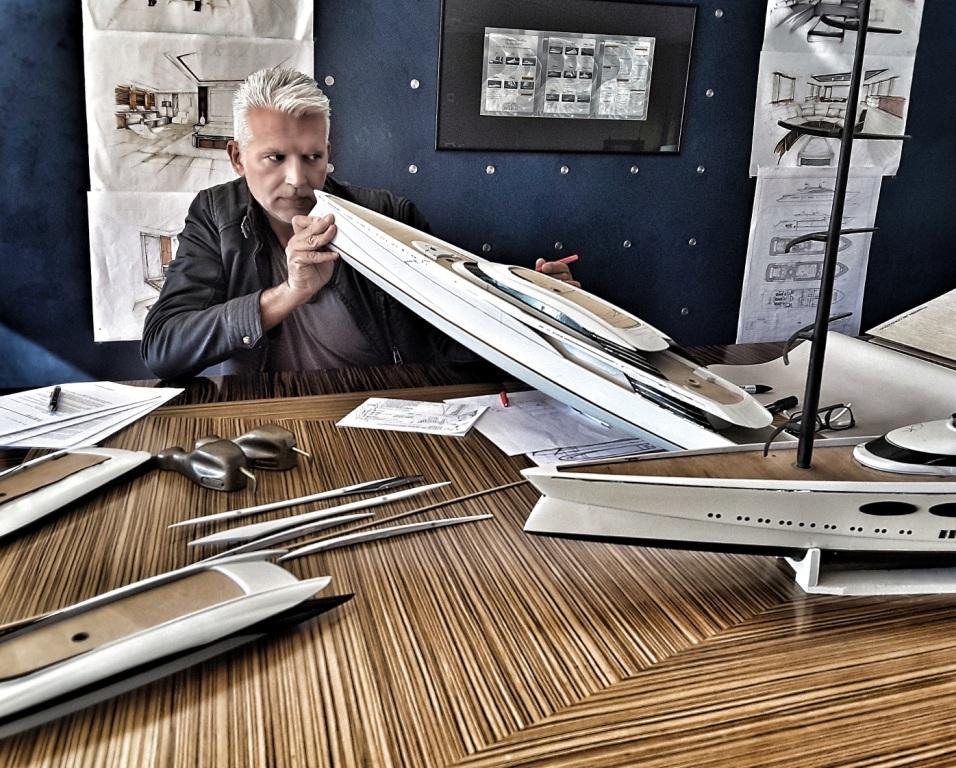 “This is how we conceived Bravo Eugenia, a new boat concept with different lines but similar proportions. Here’s why Alfa Nero and Bravo Eugenia share the same alluring sensation. The reason of their familiarity is that they have the same proportioning-systems, that can be perceived only from one angle. It is a play of perspective: Palazzo Te in Mantova displays a very famous architectural-perspective trick, for which the observer is led to think that the horses in the vault are always turned towards him. Just like when you look at a portrait and you get the feeling the eyes in the painting are watching you in any direction you go”.
“This is how we conceived Bravo Eugenia, a new boat concept with different lines but similar proportions. Here’s why Alfa Nero and Bravo Eugenia share the same alluring sensation. The reason of their familiarity is that they have the same proportioning-systems, that can be perceived only from one angle. It is a play of perspective: Palazzo Te in Mantova displays a very famous architectural-perspective trick, for which the observer is led to think that the horses in the vault are always turned towards him. Just like when you look at a portrait and you get the feeling the eyes in the painting are watching you in any direction you go”.



